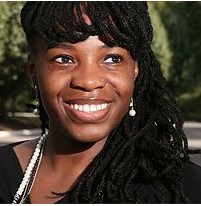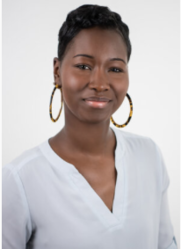Dr. Shandi Fuller recalls that when she first assembled an all-staff meeting at the Solano County Family Health Services to show how equity and ACEs screening should go hand in hand, some staff members were bewildered.
“Why are we talking about equity?” they asked.
As Fuller explained to attendees at “A Better Normal,” an ACEs Connection webinar on Oct. 13, the question led her and a colleague to develop training for medical providers on this concept. The webinar was also based on extensive research showing that White and Black patients are treated differently in health care settings. This finding is echoed by my ACEs Connection colleagues around the country, who have heard people from communities of color express concern about ACEs screening by health care providers.
The webinar focused on the question, “Can universal ACEs screening be equitable?” Joining Fuller on the panel was my colleague Ingrid Cockhren, ACEs Connection’s Midwest community facilitator; Dr. R. J. Gillespie of The Children’s Clinic in Portland, Oregon; and Cerella Craig, a researcher at the Health Justice Lab at the Yale School of Medicine, whose work involves ensuring that communities of color have input into research conducted about them.
Cockhren is an adjunct professor of developmental psychology, abnormal psychology and personality theory at Tennessee State University. She also provides equity training to pediatricians and hospital staff. She discussed how racism and bias historically have been woven into the fabric of medical care. One example Cockhren cited from the Reconstruction period after the Civil War was that newly freed slaves who were not provided food, land, medical care or shelter were blamed for the fact that they were dying off in large numbers.

“[Medical experts at the time] were unable to see that any group of people who haven’t been able to take care of themselves is going to struggle with health outcomes if they’re suddenly set free without any type of safety net,” she said. Instead, the experts fell back on “what we call a confirmation bias, which [in this case] was that Black people were physically inferior and could not make it without the help of White men.”
Cockhren provided a more recent example highlighting how research about people of color can actually be used against them. Research shows, for example, that premature Black infant girls have greater survival rates than premature White boys who receive services in neonatal intensive care units. But, a study of more than 18,000 premature infants in 134 California NICUs shows that White infants receive higher quality care than African American and Hispanic infants.
“You would think this [premature Black girls having greater survival rates] is an indication of a protective factor,” Cockhren said. “And yet, it could also be seen as an issue of who gets care.”
Also covered in the webinar were the nuts and bolts of equity training, the importance of community input in medical research and practices, and the commitment to self-awareness that equity training requires. Health care providers and the institutions they work for need to recognize their own biases and repair the harm that even the most well-intentioned medical people can unwittingly cause when serving patients of color.
Zeroing in on ACEs screening, Cockhren said that pediatricians must ensure that historical and current trauma from racism guide the conversation with patients of color. That conversation, she suggests, should include questions such as, “How is your family dealing with the stress of racism? How is your parenting being impacted by racism?”
This is especially important because of the legacy from slavery to what Cockhren calls the “Jane Crow” era of the 1980s and the crack epidemic, when tens of thousands of Black babies were systematically separated from their mothers.
“America is totally fine with separating Black children from their families,” she said. “That has always been the case. It is more prevalent, and it has been the case throughout our entire history…So if we're going to assess, and we're going to be taking this data, what will we do with it? How would we protect families of color from the implications, or the bias that exists in our society?”
Pediatrician R. J. Gillespie spoke next, building on Cockhren’s comments about how racial bias awareness must be consciously applied in health care practice. “What trauma-informed care really asks us to do is to stop asking the question, ‘What's wrong with this person?’ and start asking the question, ‘What happened to this person?’ And then to take the next step of, ‘How can I help you?’,” he said.

For Gillespie, the goal of ACEs screening boils down to building a trusting relationship with his patients. “I want my office to be a safe place for people to be able to talk about whatever challenges they're facing,” he said. “To me, the success in doing [ACEs] assessments is if I've given the family a message that I care about them, and that I'm here to help them.” Often it can take several visits to build that kind of trust, Gillespie says.
“When a parent has come back to me and revealed something like domestic violence, or they’ve told me about food insecurity problems or problems with their finances, that family has gotten the message that I'm here to help them,” he said.
Like Cockhren, Gillespie also highlighted the need for building trust in systems. “We know that Nurse-Family Partnership and other home-visiting programs can help to reduce child abuse,” he said. “But many communities see nurse visitation programs as a way to spy on their kids and on their homes. This, to me, is really one of the big equity [issues].”
Fuller talked about the basics of the equity training she developed for health care providers, including defining terms that were unfamiliar to many of them, such as structural racism and implicit bias.

Fuller has participants take an implicit bias test on the Harvard University website. It flashes images of Black and White people and measures bias in the viewers’ responses to prompts. “I know a lot of my colleagues took it, and they were really shocked when they got back the results,” she said. “But if you’re not aware of that, you can’t move forward.”
Fuller also described various ways in which racism and bias affect medical care and health outcomes. Maternal health data show that Black women are three to four times more likely to die from pregnancy-related causes than White women, no matter how many economic advantages they have.
She showed a video detailing the death of Kira Johnson in the hospital after giving birth to her baby, despite the advocacy of her attorney husband, Charles Johnson, the son of Judge Glenda Hatchett, a widely known television personality. She talks about how in 2017, even famed tennis player Serena Williams had to press nurses repeatedly to take seriously her report of severe symptoms that ultimately revealed that she had several life-threatening blood clots following the birth of her child.
“We think that if you have resources, if you have money, you should be able to overcome the odds, even if you’re Black. But what this shows us is that you’re in a racist system, and that trumps everything else,” said Fuller.
And that system is not going to be undone with just one training around equity, Fuller stressed: “This is a lifelong process. Systemic racism didn’t happen overnight, and it’s not going to change overnight. In fact, if we want different health outcomes, the system needs to be broken—and we need to build new ones.”
Cerella Craig, a research assistant with the Health Justice Lab at the Yale School of Medicine, agreed that the system has to be undone and rebuilt. And it can’t just be health care providers and their staff making the changes.

“I don’t know how we can really achieve racial equity if we’re not hearing the voices of those whom we hope to serve,” says Craig, who also serves on the Community Leadership Council of the JPB Research Network on Toxic Stress. The council is currently researching biomarkers for toxic stress in babies that can be used to provide early interventions and supports for them and their families.
Craig and her colleagues have been involved in the network’s endeavors from planning all the way through implementation—and they’re seeking input as they go.
“A piece of feedback we got was that the way we were describing toxic stress made parents feel like they had damaged their children — and that once these indicators showed up in their children’s DNA, that was it, it was irreversible, the damage was done,” she said. “You can imagine the fear that a parent with Child Protective Services involvement might have [about this kind of thing].”
With that feedback and more input, they were able to restructure the language so parents felt safe and understood that toxic stress was reversible.
Craig said the community group was also able to set researchers straight on why they might be having trouble getting parents to participate in some of their DNA research, which required them to snip off locks of their babies’ hair.
“A member of the team, who is an African American woman, gave a brief history lesson to some of the White researchers about the importance of hair in the Black community and the significance of the first haircut, particularly for Black boys,” said Craig.
Reflecting on their work overall, Craig said, “I'm not going to ring the bell and say we've been completely successful in this yet. There's still a ways to go. But I think some of what we've done is a starting point. And I think once you do these things, you really open up the door for trust.”
To view A Better Normal, “Can Universal ACEs Screening be Equitable: Concerns and Solutions, click here. We’re planning a sequel. Stay tuned for details.





Comments (0)